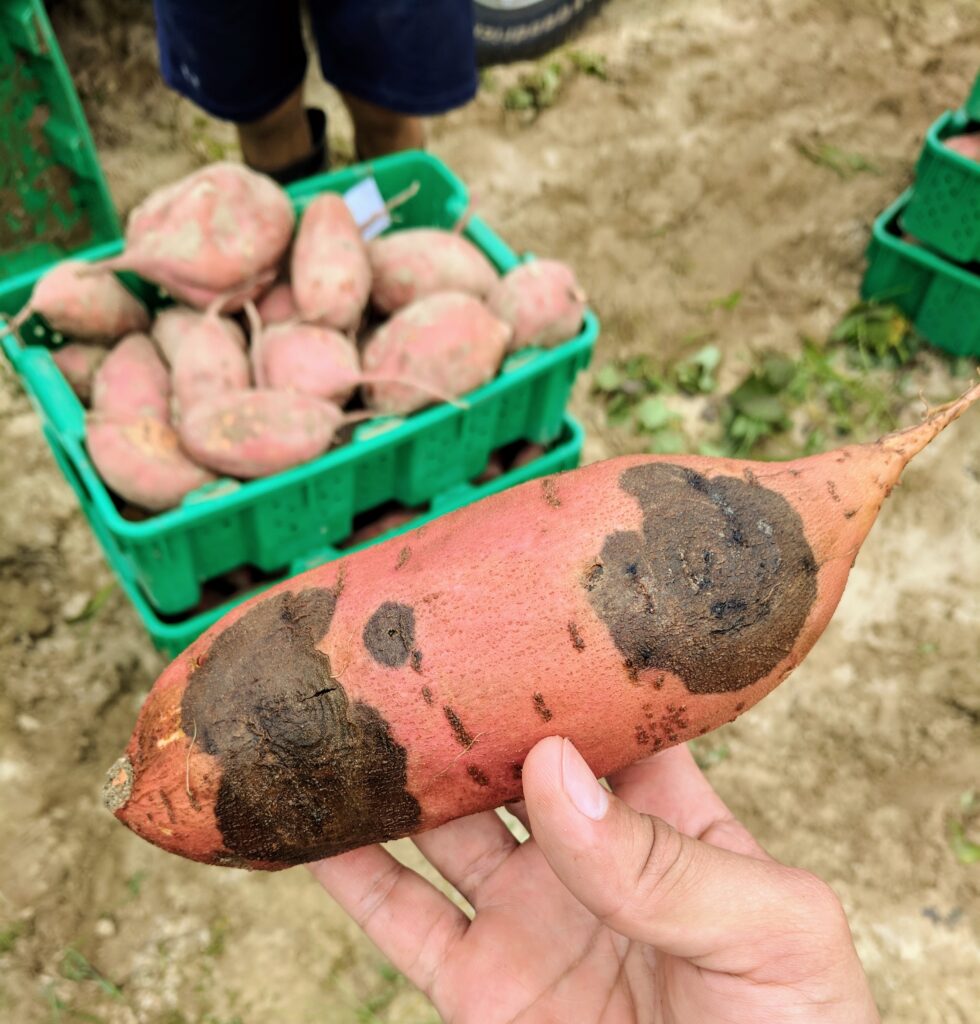EPA Issues Label Approving Mertect in Sweetpotatoes
go.ncsu.edu/readext?872840
en Español / em Português
El inglés es el idioma de control de esta página. En la medida en que haya algún conflicto entre la traducción al inglés y la traducción, el inglés prevalece.
Al hacer clic en el enlace de traducción se activa un servicio de traducción gratuito para convertir la página al español. Al igual que con cualquier traducción por Internet, la conversión no es sensible al contexto y puede que no traduzca el texto en su significado original. NC State Extension no garantiza la exactitud del texto traducido. Por favor, tenga en cuenta que algunas aplicaciones y/o servicios pueden no funcionar como se espera cuando se traducen.
Português
Inglês é o idioma de controle desta página. Na medida que haja algum conflito entre o texto original em Inglês e a tradução, o Inglês prevalece.
Ao clicar no link de tradução, um serviço gratuito de tradução será ativado para converter a página para o Português. Como em qualquer tradução pela internet, a conversão não é sensivel ao contexto e pode não ocorrer a tradução para o significado orginal. O serviço de Extensão da Carolina do Norte (NC State Extension) não garante a exatidão do texto traduzido. Por favor, observe que algumas funções ou serviços podem não funcionar como esperado após a tradução.
English
English is the controlling language of this page. To the extent there is any conflict between the English text and the translation, English controls.
Clicking on the translation link activates a free translation service to convert the page to Spanish. As with any Internet translation, the conversion is not context-sensitive and may not translate the text to its original meaning. NC State Extension does not guarantee the accuracy of the translated text. Please note that some applications and/or services may not function as expected when translated.
Collapse ▲Updates for Sweetpotato Producers in NC: EPA issues Section 3 label for Mertect (thiabendazole) in sweetpotatoes postharvest and EU raises MRL to 3 ppm
From Dr. Lina Quesada-Ocampo and Camilo H. Parada-Rojas
Sweetpotatoes remain an important commodity for North Carolina. However, postharvest diseases can result in significant crop losses, especially in exports due to shipping times and conditions. Sweetpotato black rot, caused by the fungal pathogen Ceratocystis fimbriata, is one disease that can cause damage in sweetpotatoes postharvest and requires integrated strategies, including application of fungicides, for management.

Dark, dry lesions on a sweetpotato are a typical symptom of black rot caused by Ceratocystis fimbriata.
Recently, the United States Environmental Protection Agency (EPA) issued a Section 3 label for the fungicide Mertect (thiabendazole) to be used in sweetpotatoes postharvest for control of black rot. This fungicide has also shown
efficacy against other sweetpotato postharvest diseases of economic importance. This means that Mertect is no longer under a Section 18 emergency label only available in North Carolina for postharvest use in sweetpotatoes and can now be used under the Section 3 label in the entire US.
For producers and packers that seek to export sweetpotatoes to the European Union, the European Commission revised the Maximum Residue Level (MRL) allowed for thiabendazole (Mertect) in imported sweetpotatoes and increased it from 0.01 ppm to 3 ppm. With this MRL update producers and packers now have another tool at their disposal for integrated management of devastating fungal pathogens when exporting sweetpotatoes to European markets.
If you think you may have sweetpotato black rot in your roots and need assistance with diagnostics or management, please contact your local Extension agent and send physical samples and/or photos to the Plant Disease and Insect Clinic. For additional management options, please refer to those listed in our disease factsheet.


